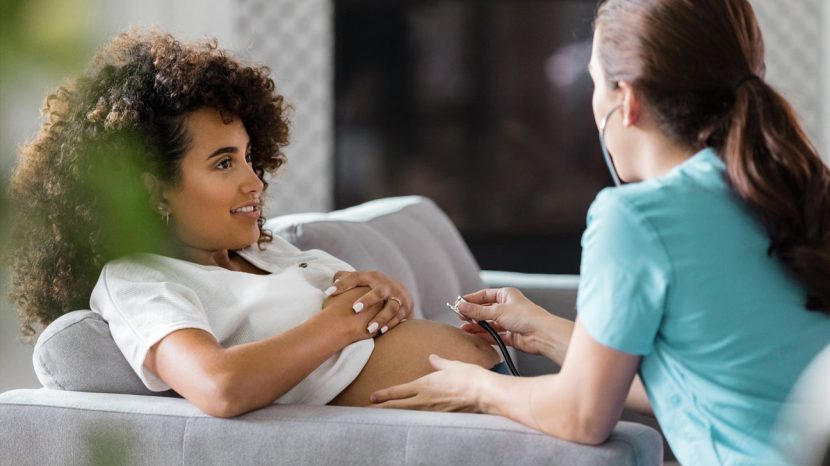As the holiday season arrives, it’s highly likely you’ll indulge in at least one hearty meal during the festivities. Instead of lounging on the couch after enjoying a delicious dessert, why not take a stroll? This simple act can enhance your health post-meal, and even a brief walk can provide significant advantages. The practice of […]


As the holiday season arrives, it’s highly likely you’ll indulge in at least one hearty meal during the festivities.
Instead of lounging on the couch after enjoying a delicious dessert, why not take a stroll? This simple act can enhance your health post-meal, and even a brief walk can provide significant advantages.
The practice of walking after meals dates back centuries, as pointed out by Loretta DiPietro, an exercise and nutrition science professor at the George Washington University Milken Institute School of Public Health.
“This has been a tradition among Italians and Europeans for ages. My grandparents did it too,” she remarks.
In the past, these walks were often called constitutionals or strolls meant for health benefits.
One factor that may have contributed to the decline of this habit is television, but it’s making a comeback, fueled by trending TikTok videos promoting the advantages of taking a post-meal stroll — sometimes humorously referred to as “fart walks” due to their ability to help with gas! Experts agree that this is one wellness tip that social media has accurately highlighted.
“Walking consistently, at any time, is beneficial. However, you gain more benefits if you walk after meals,” DiPietro states.
Why is this the case? Firstly, walking or engaging in physical activities can kickstart digestion, making it easier for your body to process the meal, according to Dr. Chris Damman, a gastroenterologist and professor at the University of Washington focusing on the link between microbiomes and metabolic diseases.
“This is quite beneficial for your digestive health, aiding in movement, so to speak, and can also help clear the air, if you catch my drift,” Damman adds.
Enhanced digestion may assist in transporting more fiber and undigested nutrients to the lower gut, thus nourishing the microbes residing there, according to Damman. When you provide them with fiber-rich foods, these microbes, in turn, produce numerous compounds essential for maintaining brain function, immune system strength, and metabolic health.
Additionally, walking plays a crucial role in regulating blood sugar levels post-eating. When food is digested, it breaks down into various components, including glucose, which is a primary energy source for the body. Following a meal, glucose enters the bloodstream. A walk afterwards can help mitigate this increase, he explains.
“One reason walking is advantageous is that as we use our muscles — both our hearts and the muscles in our legs and arms — they absorb the glucose that our gut is releasing into the bloodstream,” Damman shares. “This effectively draws glucose out of the blood and into the muscles where it’s immediately utilized for movement.”
Typically, the body produces insulin to help remove glucose from the blood and into adjacent cells. However, muscle contractions from walking can achieve this without the need for insulin.
This results in reduced strain on your pancreas since it doesn’t need to produce as much insulin following a meal. This is vital because “continuously stressing the pancreas can lead to pre-diabetes or diabetes over time,” Damman indicates.
You don’t need to take long or vigorous walks to experience these benefits. DiPietro collaborated on research showing that a 15-minute moderate-paced walk after a meal can significantly enhance blood sugar regulation, even hours later. Other studies have shown that walking for just 2 to 5 minutes after a meal can still lower blood sugar, though walking for longer duration yields better results.
DiPietro recommends walking within about thirty minutes after eating, when your meal is being digested and glucose enters your bloodstream, allowing your muscles to utilize it right away.
If the weather is unsuitable for an outdoor walk — or if you’re too busy catching up on Netflix — don’t let that stop you. “Just stand up, march in place, and move your arms,” advises DiPietro. Even a few minutes of physical movement can enhance your body’s ability to process glucose.
According to DiPietro, while all meals benefit from a post-meal walk, dinner is the best option. This is often the largest meal of the day for many individuals.
“You’re consuming a substantial number of calories,” she explains, “with an influx of sugar and fat circulating in your bloodstream. The usual response is to collapse in front of the TV or head to bed,” which, she warns, can be detrimental, particularly because the body produces less insulin at night, especially as we grow older.
This mix of low insulin levels and lounging can lead to high blood sugar, which should be avoided at all costs, particularly before sleep, states Luis Buenaver, a behavioral sleep specialist at Johns Hopkins University. Rapid fluctuations in blood sugar are associated with poor quality of sleep.
A gentle post-dinner walk can prevent such occurrences while improving circulation, he adds. “It also fosters relaxation,” promoting a better night’s rest.
This is especially crucial after heavy meals such as holiday dinners.
“If there’s ever a meal that calls for a walk, it’s Thanksgiving dinner, considering the caloric load,” notes DiPietro. Hence, resist the temptation to nap and opt for a walk first.
Edited by Jane Greenhalgh
Copyright 2024 NPR














